From Beyoncé to Zoe Kravitz, Why Braids Were the Hairstyle of the Decade
To mark the 21st century making it through its teen years, the #20teens is a series from Teen Vogue that celebrates the best in culture, politics, and style from the last decade.
On December 9, Beyoncé Knowles-Carter announced the relaunch of her clothing line, Ivy Park, by posting on Instagram a picture of herself in burgundy and ivory beaded braids spelling out the brand name. The same day, she appeared on the cover of Elle Magazine, shot by her frequent collaborator Melina Matsoukas, in jumbo messy box braids. Two back-to-back instances in which the pop star, who spent the first years of her career in braided hairstyles, decided to show pride and appreciation for Black culture, almost as if she’s going back to her roots.
It makes for a strong argument that braids and locs, in all of their styles and intricacies, were the hairstyle that defined this decade. Styles such as cornrows have been around since pre-colonization Africa, but in the 2010s, we saw an influx of celebrities, creatives, and influencers wearing a variety of braided styles that put the artistry and tradition of hair braiding front and center. Braids are no longer just a summer style to be worn on vacation or playing sports, or a nostalgic hair memory to reminisce about — with the resurgence of the natural hair movement, Black women are tucking away their hair in all seasons, at all ages and for any occasion. Thus, braids became one way Black people are unapologetically showing up as themselves in Hollywood, in media, and in the workplace.
Beyoncé is not the only celebrity often seen wearing braids, cornrows, or locs recently. Regina King graced Entertainment Weekly as Entertainer of the Year in purple braids. Rihanna arrived at the 2019 British Fashion Awards in a maze-like cornrow design (and on the covers of Allure, i-D, and Lui magazine with chunky, loose braids). Braid styles are part of FKA twigs’s signature look. Young M.A emerged with her popular song “OOOUUU” with four plaited braids hitting her shoulders. Fashion runways, editorials, and ad campaigns are full of black models with cornrows and intricate braiding styles. Halle Bailey will star in The Little Mermaid next year with her locs. Most recently, Nia Franklin wore braids while serving as Miss America 2019, and the rapper Chika appeared on Teen Vogue’s December cover in a braided crown by hairstylist Lacy Redway.
This past decade, with the help of celebrities like Solange Knowles, Janelle Monae, Justine Skye, Jordyn Woods, Yara Shahidi, Gabrielle Union, Alicia Keys, Amandla Sternberg, Ciara, Tessa Thompson, Marsai Martin, Serena and Venus Williams, Zoe Kravtiz, Lupita Nyong'o, Willow Smith, Issa Rae, Tracee Ellis Ross, and Keke Palmer, we saw braids take center stage on red carpets and on the covers of magazines.
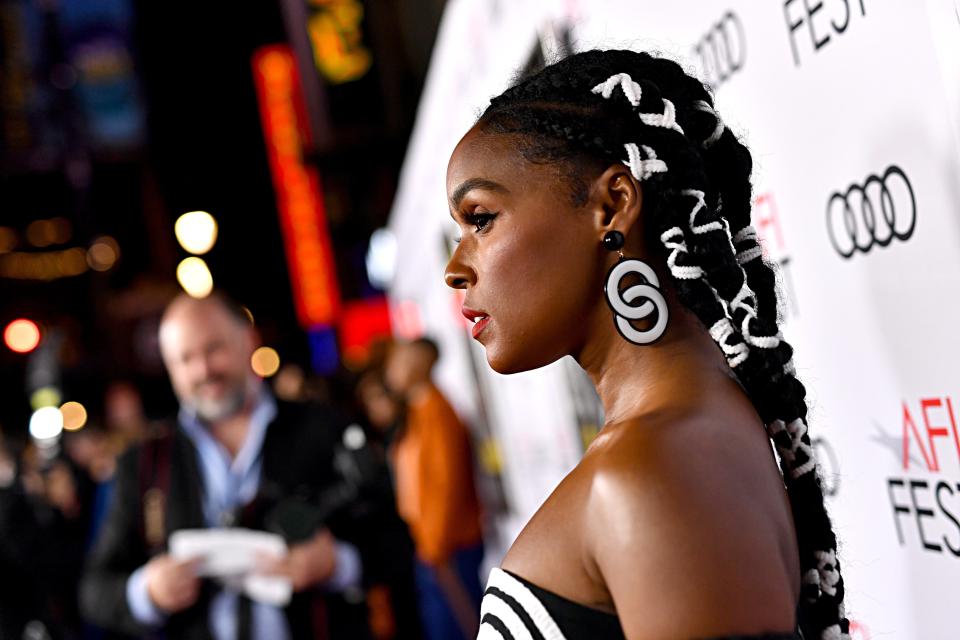
AFI FEST 2019 Presented By Audi – "Queen & Slim" Premiere – Red Carpet
Emma McIntyreOff the red carpet, braids made their way into politics too. Lawsuits and viral stories continued to bring attention to hair discrimination; laws barring discrimination against protective styles and hair textures passed in California, New York, and New Jersey. Sports reporter Jemele Hill famously called President Donald Trump a “white supremacist” while wearing her signature braids on-air.
It’s important to note that braids and cornrows have long been on covers and pages of black magazines, and there were even ones solely dedicated to braided hairstyles. In 1973, Cicely Tyson appeared on the cover of Jet Magazine in a cornrow style similar to the one worn by her character Rebecca in the film Sounder. She also wore braids on the cover of Ebony in 1979 and 1981.
Although celebrities such as Queen Latifah and Alicia Keys appeared on the covers of Essence and Ebony in the 1990s and early 2000s, these moments were few and far between. Yes, box braids and microbraids gained popularity, but this was a time when weaves and pressed hair were more likely to be worn by black women in the spotlight — and with pride. Those styles were seen as more presentable, desirable, and grown-up in the public eye, especially considering black women were constantly discriminated against for their natural styles. In Chris Rock's controversial 2009 documentary, Good Hair, black celebrities openly talk about their relationships with weave. “There's always this sort of pressure within the black community, like, if you have good hair, you're prettier or better than the brown-skinned girl that wears the Afro or dreads or the natural hairstyle," said actor Nia Long in the documentary.
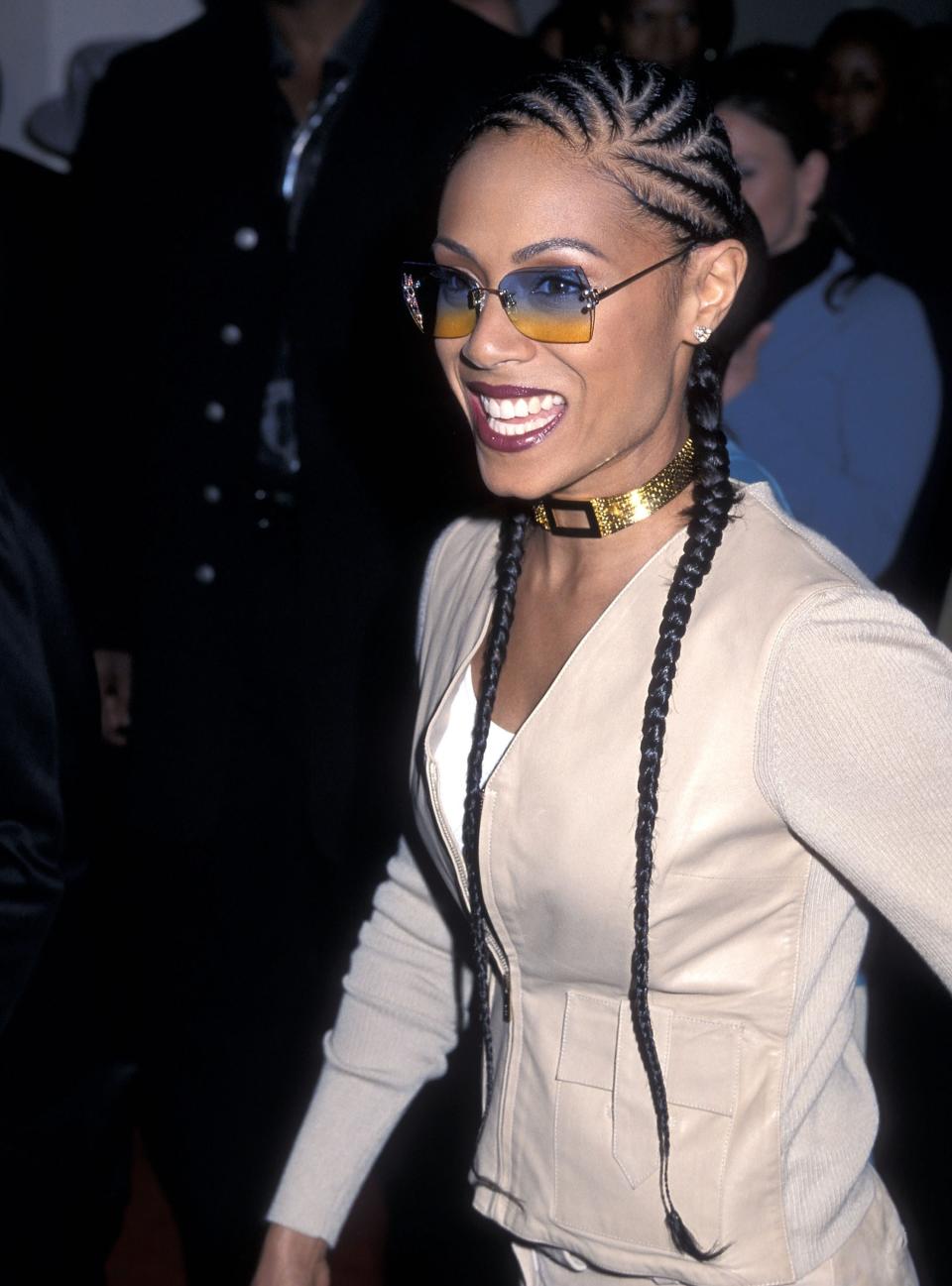
Ron Galella Archive - File Photos 2011
Ron Galella, Ltd.Hairstylist Araxi Lindsey agrees. She is responsible for the Bantu-knot style worn by Jada Pinkett-Smith’s character in the Matrix franchise and styled Pinkett-Smith in cornrows for the Kingdom Come movie premiere in 2001. “I hadn’t seen female actors on the red carpet with the cornrow braid style I did on Jada for the Kingdom Come premiere,” Lindsey tells Teen Vogue. “Back then, people were calling that style of braids ‘Iverson [Allen Iverson] braids.’”
Lindsey recalls it being one of the first times she saw a documented photo of an actor wearing cornrows on a red carpet, and it led people to her salon chair for the same look. Today, Lindsey is the head of the hair department of black-ish and has styled some of Tracee Ellis Ross’s awards-show cornrow looks.
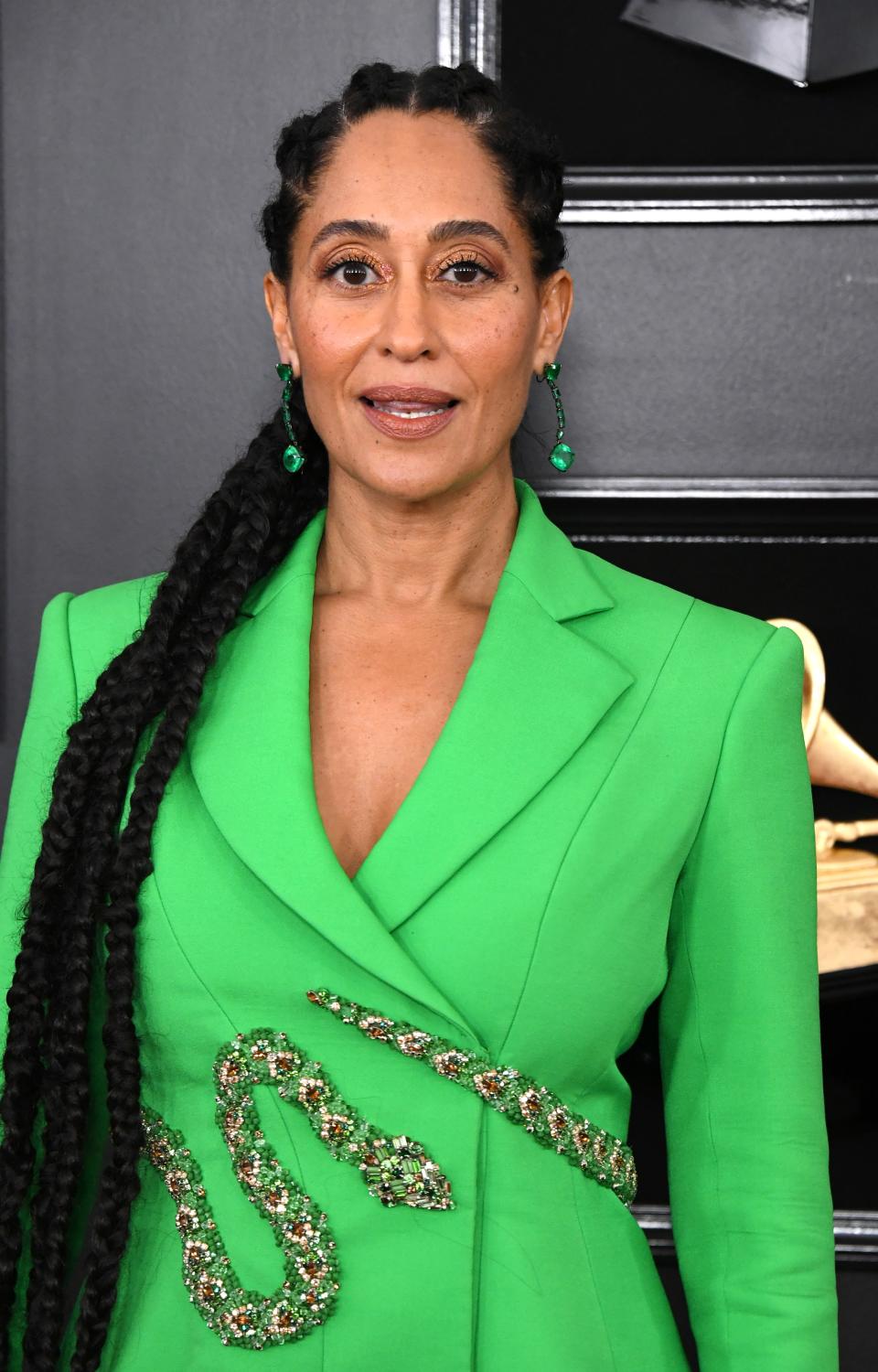
61st Annual GRAMMY Awards - Arrivals
Jon KopaloffAnd then there is Brandy Norwood. When she appeared on Thea (which aired for one season but led to her leading role on Moesha), she wore bob-length individual braids, burnt at the ends for a cropped look. From there, audiences became familiar with Brandy and her braided hairstyles — microbraids, jumbo braids in half-up, half-down styles, and different color tones at all sorts of lengths. So of course, in 1997, when Brandy became the first Black actor to play Cinderella on screen, it felt natural that she wore her braids adorned with a crown.
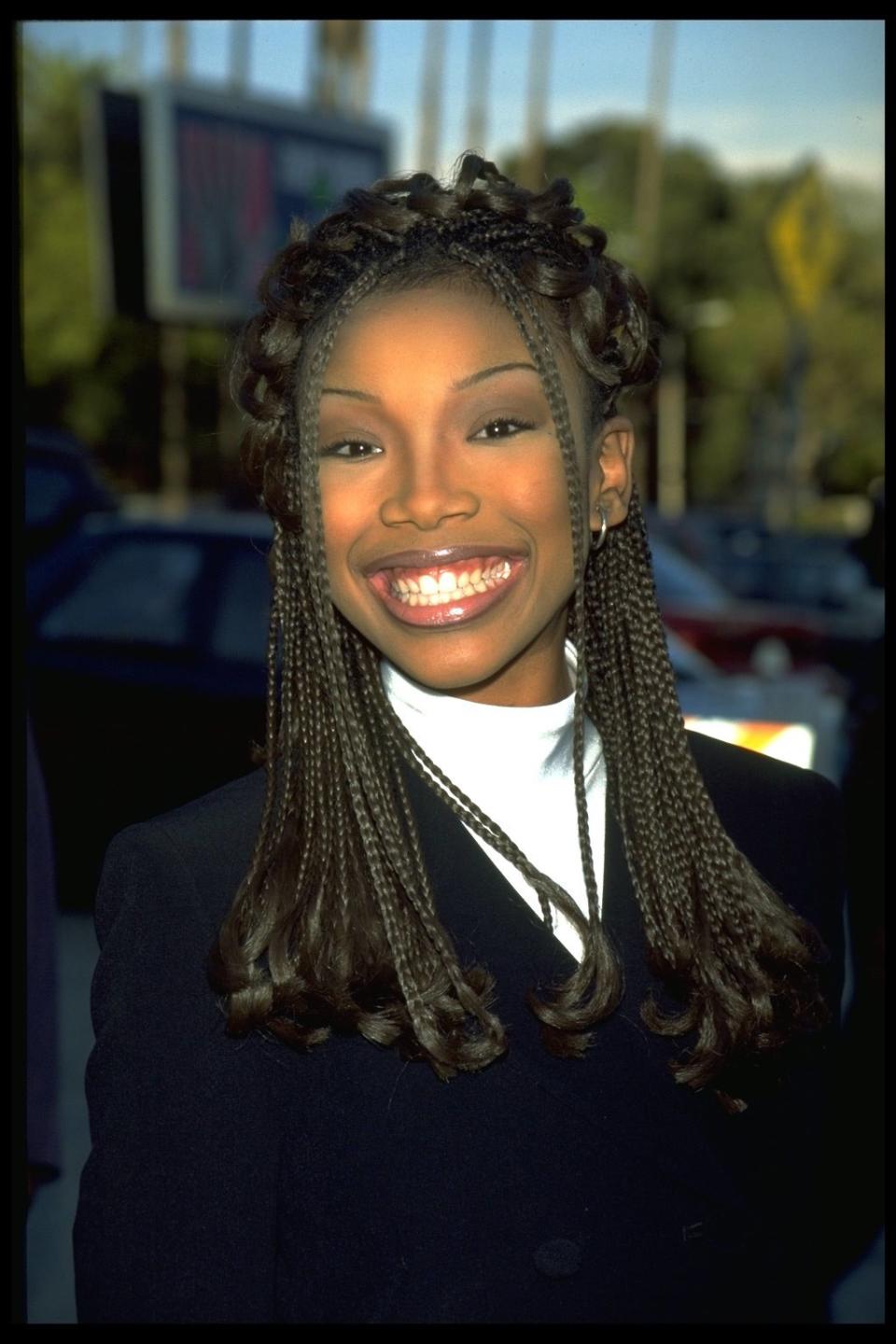
20TH BLOCKBUSTER ENTERTAINMENT AWARDS
Frank TrapperBy 2010, all eyes were on the natural-hair movement. Documentaries such as My Nappy Roots: A Journey Through Black Hair-itage shed light on both black hair and the impact of Eurocentric beauty standards throughout history, while artists such as India Arie, Jill Scott, Erykah Badu, and Lauryn Hill were wearing their natural hair. Braids were being worn more frequently, in all seasons, as a way to transition from having relaxed hair to natural hair without doing a lot of tugging and styling. These styles also began to be known as protective styles. Beauty vloggers on YouTube were not only documenting their own hair journeys and giving product recommendations, but posting tutorials on how viewers could braid, twist, and cornrow their own hair with videos like “Janet Jackson Poetic Justice Makeup + Braids” and “Step by Step Marley Twists for Beginners.” These styles were convenient but also a creative outlet, and the videos helped shed light on how often Black women would switch up their hairstyles.
Black actors and models also started openly discussing the need for style teams that could do textured hair. “Most black actresses come to a new set w/ their hair done (me) or bring their wigs & clip-ins w/them. It’s either that or take a chance that you will look crazy on-screen,” actor Yvette Nicole Brown said on Twitter. From there, Natasha Rothwell of Insecure and other actors chimed in to share their experiences.
“For consistency, my lifestyle, and my travel schedule, what made the most sense was braid extensions and twists,” said former MSNBC on-air host and longtime braid wearer Melissa Harris-Perry in the foreword of the new edition of Hair Story: Untangling the Roots of Black Hair in America.
Indeed, wigs and braids became a luxury, saving black women from frequent trips to the hair salon, time while getting ready for work in the morning, and even, for those in the public eye, styles gone wrong on photo-shoot sets. In the workplace and educational settings, protective styles were still discriminated against, ridiculed as “unkempt” or gawked at, but Black people were no longer quiet about it.
In 2014, the United States Military finally lifted their ban on natural hairstyles like twists and locs. The CROWN Act, which bars discrimination against protective styles and hair texture, was passed this year in New York and will go into effect in California in January 2020. A hair anti-discrimination bill also recently passed in New Jersey, the same state wherein 2018 a wrestler was told to cut his dreadlocks or forfeit the match. Twelve other states are considering the CROWN Act or writing their own bill.
As terms like “unapologetically black,” “carefree black girl” and “black girl magic” became popular and more doors opened for Black visibility in spaces that weren’t always accepting, cultural appropriation and Black culture became a big topic of discussion. In 2011, Kim Kardashian filmed a music video wearing a Fulani braid style and called them “Bo Derek braids.” Actor Bo Derek wore the style in 1979 for the film 10 and was credited with making it a popular style back then, a perspective that overlooked the braids’ origins in a nomadic pastoral community of West Africa. By 2015, Kylie Jenner, Kendall Jenner, and Khloe Kardashian had also been spotted wearing cornrows. It caused a complete uproar, launching a thousand think pieces on the origins of cornrows, who owns them, and who is allowed to wear them — all while lifestyle sites continued to publish pieces on styles originating from by Black culture as a hot trend “taken to a new epic level” by white stars. Amandla Stenberg famously broke down the issue in a YouTube video that also served as a school project on cultural appropriation.
The rise of braids in the spotlight also served to expose cultural ignorance. In 2015, Zendaya arrived at the Oscars in faux locs (a style her hairstylist of that night, Shelby Swain, says Zendaya wore “to bring awareness to the beauty of natural hair”) and was ridiculed for it by former Fashion Police host Guiliana Rancic. “She smells like patchouli oil…or maybe weed,” Rancic said. (She ended up apologizing on the air.)
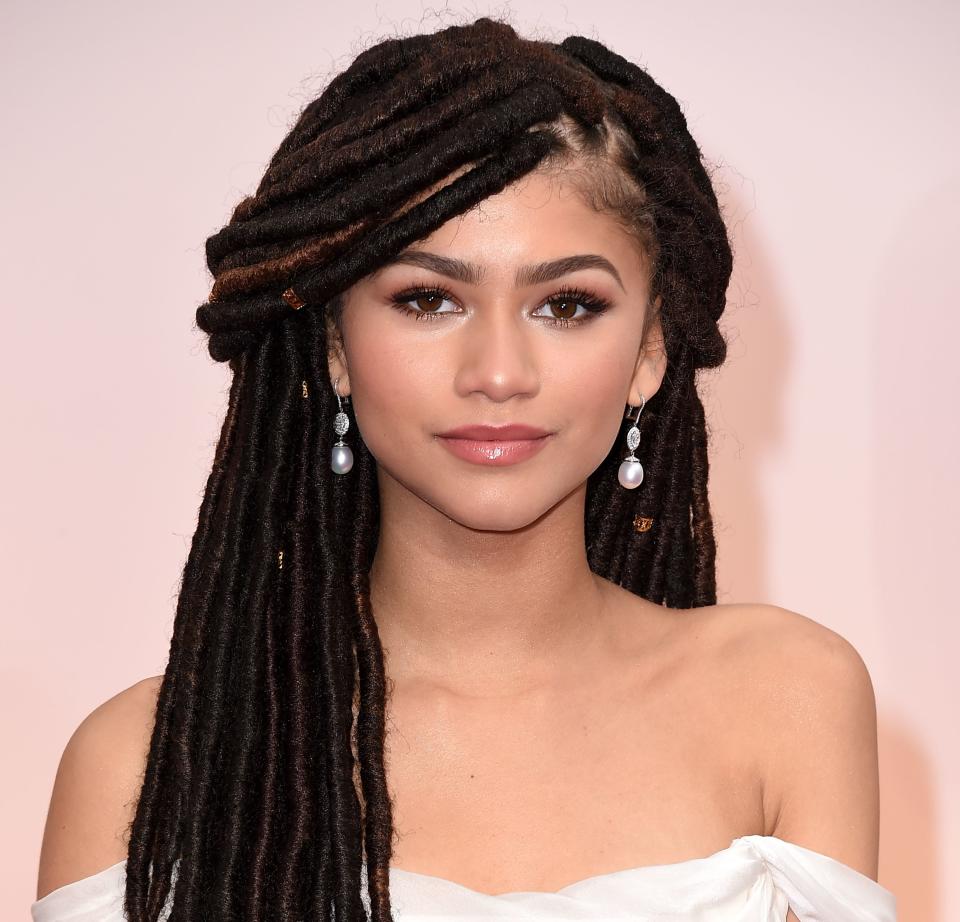
87th Annual Academy Awards - Arrivals
Steve Granitz“Who has to defend their look or be dealt blows of ignorant statements or sometimes dehumanizing statements and then who doesn't?” says Kimberly Jenkins, a fashion history and theory lecturer at Parsons School of Design. “ Who gets to be applauded as being cool and edgy or fashionable or making a ‘hood’ look chic?”
While Rancic’s comments shed light on the answer to this question, Zendaya’s faux locs also served as a signifier of how Black hairstylists were beginning to experiment with new braid techniques that resulted in new trends.
There are the loose and wavy Goddess Locs created by Kari Williams, a trichologist and hairstylist. Actor Meghan Good was the first person to wear them in 2015. I knew there was something special and different [about them] from traditional faux locs, so I named them Goddess Locs. I quickly began to get requests from several women who wanted the style," says Williams. Stars such as Willow Smith, Tyra Banks, Lisa Leslie, Rutina Wesleyand, Eva Marcille, have gone to Williams for the style.
Tiffini Gatlin launched her line of pre-curled, itch-free synthetic hair, Latched + Hooked, ideal for crochet braids and an upgrade to the hot-water curling technique for the style that posed the threat of burning. Today the crochet braid styles have expanded beyond the use of curling rods that Gatlin was familiar with in middle school and to other techniques, like crochet faux locs.
Kailyn Rogers, the creator of passion twists, debuted the style on Instagram in January 2018. She told The Zoe Report, "I wanted something that kind of resembled goddess locs but also looked like our own hair twisted." The style features a type of braiding hair with varying textures, both kinky and silky, leaving a finished product with loose, curly ends.
These were all part of the growing trend of braided styles that looked worn in, “boho,” and “that messy look,” as hairstylist Susan Oludele calls it — despite continued criticism black women faced in the workplace for “unkempt” styles. The first time Zoe Kravitz wore braids was for the movie DOPE in 2015. It became her go-to style — and the one she is most frequently seen on magazine covers with. In May 2017, Kravitz appeared on the cover of Allure with platinum blonde microbraids styled in a crown styled by Nikki Nelms. Kravitz also wore her hair in buns or ponytails or curled and put a new spotlight on the versatility of microbraids, popularizing the messy, carefree style.
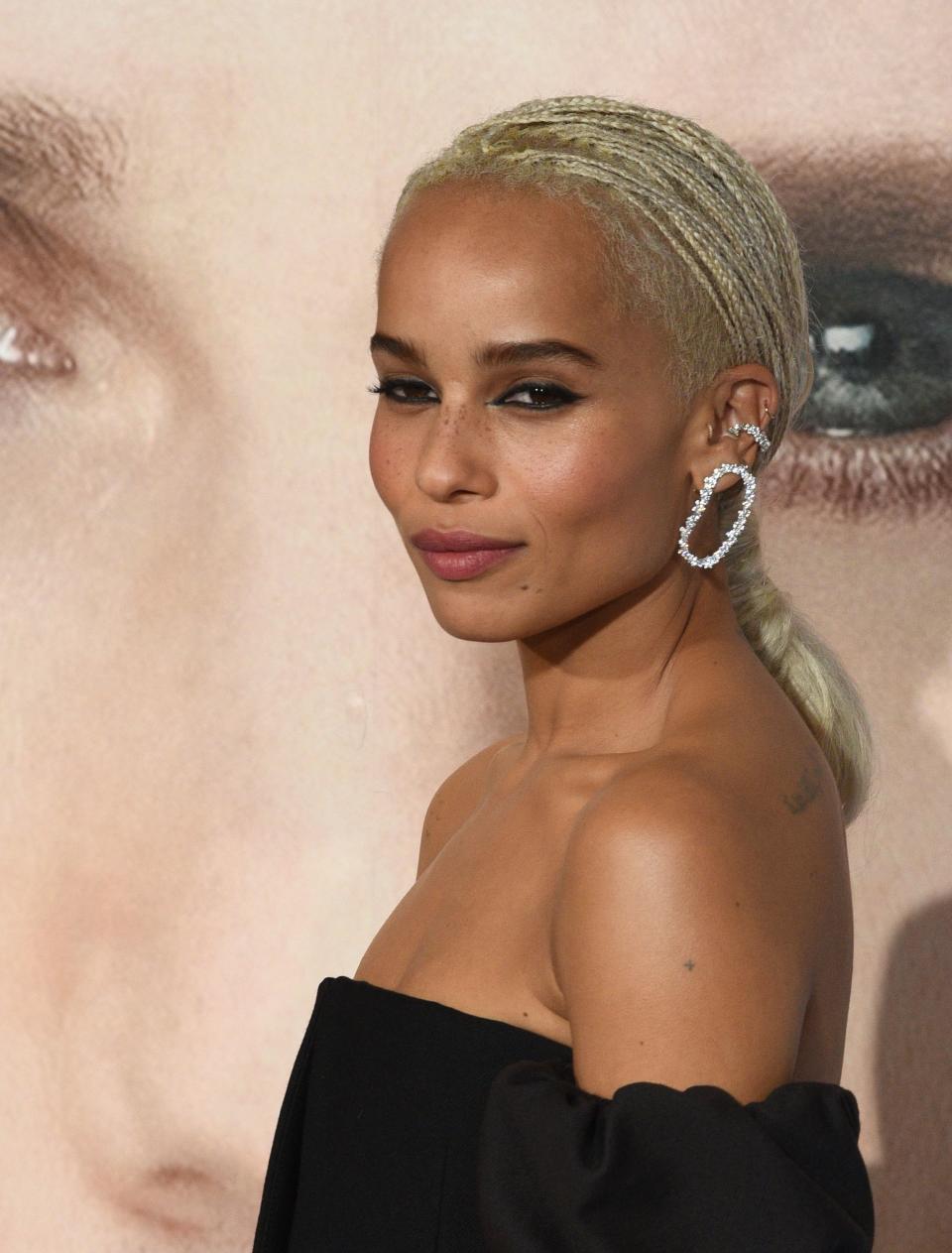
Premiere Of HBO's "Big Little Lies" - Arrivals
C FlaniganThe actor told C Magazine: “I originally did them as a joke, like an ode to the ’90s…. But even though they weren't a symbolic choice from the get-go, it still feels important, I think, to be a brown girl with natural hair. You see blond girls with the same hair in every movie.”
We also saw the popularity of knotless box braids, a style created by feeding hair into the wearer’s hair versus latching at the scalp. This technique is seen as a way to prevent hair breakage close to the roots and around the edges. Still, Janet Jackson’s box braids in 1993’s Poetic Justice remained a reference for inspiration.
While there were many celebrities this past decade whose braided hairstyles became an inspiration for new dos, it can be said that Beyoncé and Solange were catalysts for their popularity.
In 2010, when Solange began DJing and getting more attention for her music, she often wore head-to-butt medium box braids — a style she’s been wearing as young as 15 years old. For the past nine years, Solange has collaborated with famed hairstylists, such as Oludele and Nikki Nelms, on different styles, including box braids and Havana twists beaded styles that she wore on the cover of Surface Magazine, and her own album cover for A Seat at the Table. Solange told Evening Standard, which ironically cropped out her braid crown for her cover story, that for her braiding is “act of beauty, an act of convenience, and an act of tradition.”
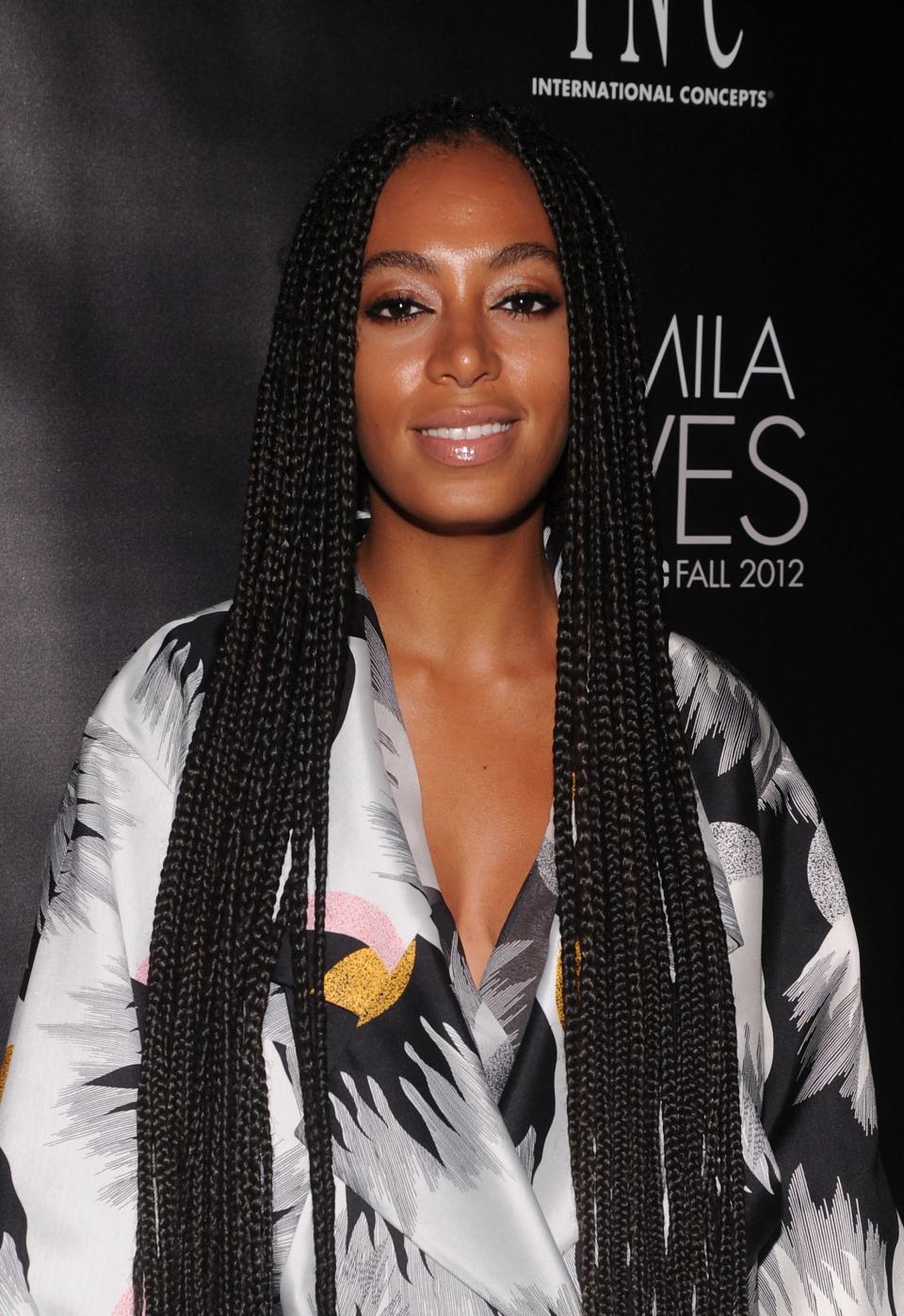
INC International Concepts Unveils Camila Alves As Brand Ambassador
Jamie McCarthySolange’s sister, icon Beyoncé Knowles-Carter has also worn braids, twists, and cornrows throughout her career as well. Oludele did a deep-side-part cornrow look on Knowles-Carter for Michelle Williams’s “Say Yes” video in 2014. In the debut of her studio album and film Lemonade, she showcased a variety of styles by hairstylist Kim Kimble that set off braid trends, including Fulani braids and another deep-side-part cornrow look dubbed the “Lemonade braids.” She also appeared on the coveted September issue of Vogue in 2018, photographed by Tyler Mitchell, the first African American to shoot a Vogue cover in its 125-year history.
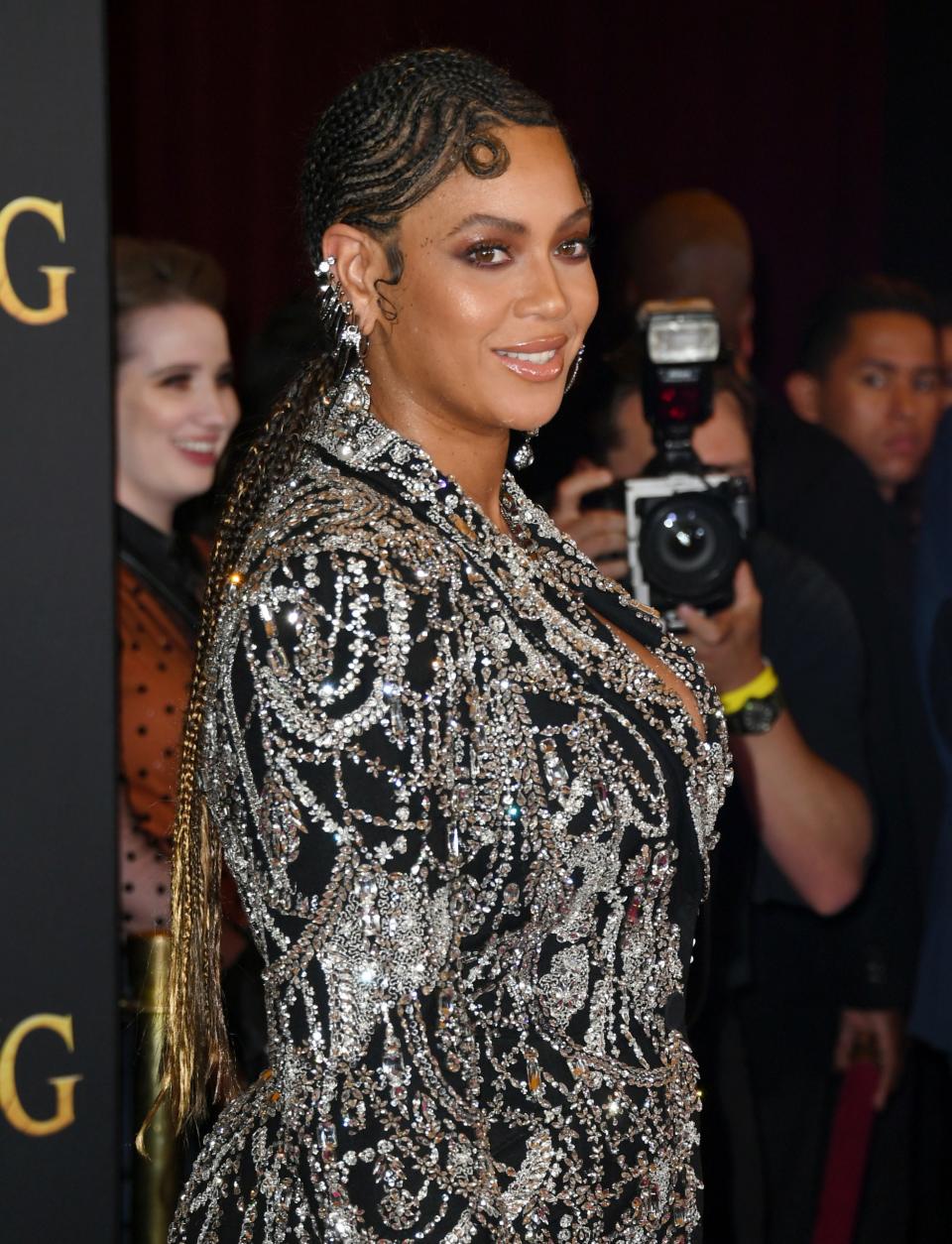
Premiere Of Disney's "The Lion King" - Arrivals
Jon KopaloffIn an interview with NPR’s All Things Considered, Solange said, “The hair journey of a black woman is so specific. And it’s really hard. And your hair can send so many different messages to so many different people in the world that it becomes political. It becomes social.”
From the red carpet to the courtroom and the workplace, braids have become one way black women began to simply tell this world: “This is who I am.” Much like the Black is Beautiful movement of ‘60s, in which the Afro, also seen as an easier style to maintain than pressed hair, was a symbol of black pride. In this decade, braids have become a way to unapologetically express one’s blackness, both politically and socially.
Originally Appeared on Teen Vogue

